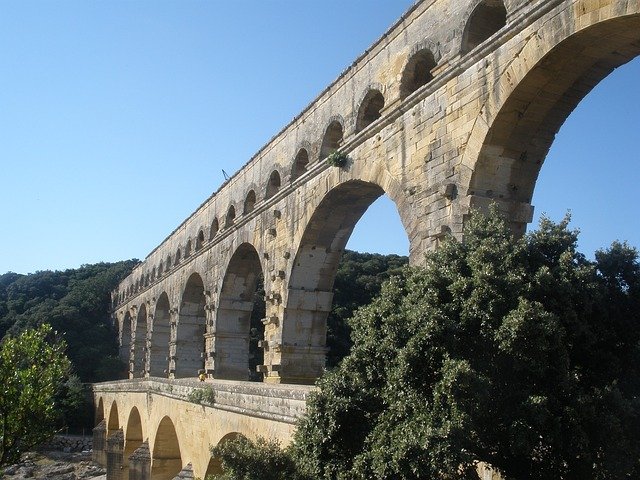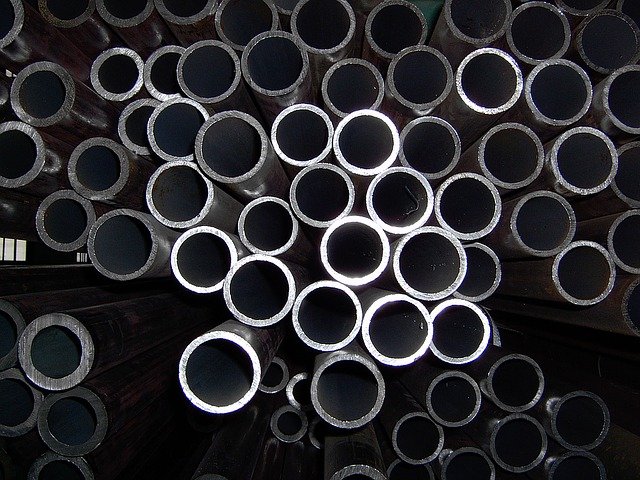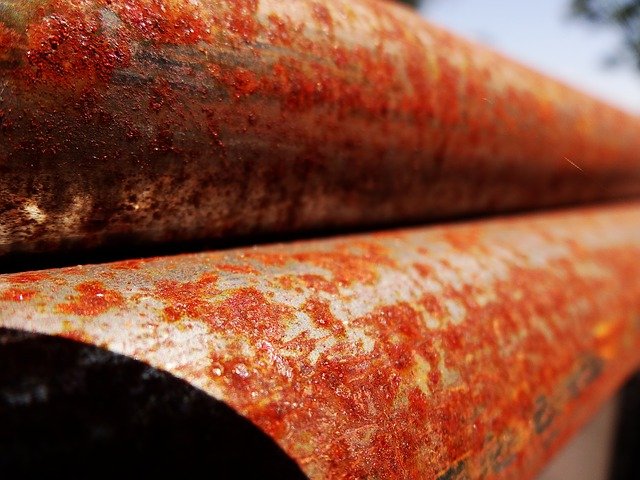THE AGE LONG BATTLE FOR SAFE WATER DELIVERY: High Density Polyethylene pipes versus metal pipes
The meet-up was a beautiful experience and while it’s tempting to write something about that, I feel like people such as @djoi @emperorhassy @eurogee @synick @mrbreeziewrites @agbonna has already got you covered so you can check out their blogs to read more on that, special thanks to the management team of stemng and @gentleshaid in particular for the experience and bringing us all together. Now to the business of the day, I’d like to start with something Manoj Bhargava once said;
People with water borne diseases occupy more than 50% of hospital beds across the world. Does the answer lie in building more hospitals? Really, what is needed is to give them clean water. -Manoj Bhargava
source
The above leads to the question how do you give people clean water? Okay so if you’ve been following my posts then you’d know it’s no news that the major water source used by the world’s population is surface water and groundwater, and it’s also no news that ground water most times doesn’t require treatment and can be situated at the point of use, surface water on the other hand would always require treatment to make it potable, but does this mean that water treatment is all that is required to give people clean and safe drinking water? Of course it isn’t.
After the water is treated, it still needs to be gotten to the consumers and the fact that it won’t be retreated at the point of use makes it very important for the treated water to get to the consumers untainted and this makes water supply just as important as water treatment when it comes to giving people clean water. So how has water been supplied over the years?
Brief history of Water Distribution Systems
Before the use of pipes in the supply of water, people would normally get their water directly from source, cities were situated very close to a water source, as a matter of fact, the history of mankind and ancient civilization is connected to water supply, think Egypt and the river Nile, Mesopotamia in the Tigris-Euphrates valley, China in the Yellow River valley, Indian civilization in the Indus valley, all of these ancient civilization flourished as a result of being close to a water source which is used to grow their foods and support life, but with population growth and expansion came the need to find ways to get water to people who were not as close to these water source and then came the construction of Qanats (underground water channels for transporting groundwater) in ancient Persia in 700BC; then the Romans gave us the Roman Aqueducts( an open channel which uses gravity for the conveyance of water from place to place) in 312BC; structures such as the Stairway of Fountains was constructed in Peru in 1450, the structure is said to be one of the greatest example of early hydraulic engineering; at some point the use of pipe like structures made from logs of woods were used in Boston around 1652, this posed some particular problems as the water becomes infested as the woods rot and retained stagnant water which attracts insects, the need to provide a cleaner and safer water for the people led to the introduction of metal pipes, the first of such was used in Philadelphia in 1804 where cast iron pipes were used in the supply of water, other states such as New York and Chicago quickly followed suit and till date, these pipes are still being used around the world, but have these metal pipes(cast iron and steel pipes) achieved the goal of providing safe drinking water for consumers?
Dangers associated with metal pipes
There are various metal pipes being used in the distribution of water, examples of such are the cast iron pipes, galvanized steel pipes, stainless steel pipes, ductile iron pipes, mild steel pipes,
the single major health problem associated with the use of these pipes comes in the form of Corrosion, while some of these pipes are considered to be somewhat resistant to corrosion (stainless steel for example) and while some of them might be coated with other substances to help prevent rust(galvanized steel for example), the truth is that at some point, these pipes would eventually corrode, they are metals after all while some of those coatings could end up contaminating the water.
Corrosion occurs when metals return to their more stable ore state through the help of some chemical reactions; this source defines corrosion as
Corrosion is a natural process which converts a refined metal to a more chemically-stable form, such as its oxide, hydroxide, or sulfide. It is the gradual destruction of materials (usually metals) by chemical and/or electrochemical reaction with their environment
In the case of metal pipes the environment is the water, the pipes get corroded as a result of some factors such as the pH of the water, Oxygen in the water, Minerals in the water, Water temperature and the Water velocity.
Water of low pH tends to corrode metals faster, for example in pipes made of copper, when water whose pH is more than 8 flows through it, a sort of copper oxide film is formed in the pipe, these film would in turn protect the pipe from further corrosion, however, when the water is of a lower pH, the copper oxide film is dissolved and the pipe would then be subjected to further corrosion.
The amount of oxygen present in the water also degrades metals through oxidation reactions where the metals loses its electrons to oxygen and thereby resulting in a reddish brown substance known as iron oxide(Fe2O3) or more commonly called rust.
Minerals in water such as calcium may help reduce the chances of corrosion in the pipes, however, a high level of calcium in water would result in a buildup of calcium in the pipe and then contaminate the water.
The water temperature is another factor which helps with the oxidation reaction in the pipes, water of high temperature serves as a sort of catalyst and help speed up the oxidation reaction leading to rust in the pipes.
The water velocity creates a more physical kind of corrosion in the pipes, water of high velocity tend to corrode the pipes similar to how water causes erosion, the protective coatings formed in the pipe are eroded by water of high velocity, thereby subjecting the pipes to more rapid corrosion.
Health risk of water from corroded pipes
Corrosive water (water with the potential to corrode pipes) in itself is not an health risk, it can be safely ingested without the risk of any kind of illness, the problem though lies in what happens when the water leads to corrosion of pipes, these pipes tend to release some contaminants when corroded which in turn mixes with the water, much of these contaminants which poses some serious health risk come in the form of copper and lead.
When metal pipes made of copper starts to corrode, traces of copper is released into the water, in small quantities copper is actually good for the body as it helps in the development of the body but when consumed in large quantities like it would be if you constantly drink water from corroded copper pipe, then the human body is unable to properly process the copper which then leads to a buildup of copper in the body and these leads to damaging oxidant radicals in the body which are responsible for diseases such as Alzheimer’s, heart diseases, diabetes, liver damage, schizophrenia etc.
The use of lead pipes has actually been banned by the Environmental Protection Agency (EPA) in 1991 when it was discovered that lead is a deadly neurotoxin which causes harm to the brain and the nervous system,however, some metal pipes still uses solders which are made of lead in joining the pipes during the manufacturing stage of the pipes while some old houses still have lead pipes in use for their water supply; in galvanized steel also, zinc is used to prevent the pipes from corrosion, the irony of it though is that the pipes still corrode at some point and the zinc used for the coatings which contains some amount of lead releases those lead into the water, when there is an excess amount of lead in the body it leads to problems such as brain damage, kidney problems, it’s also found that in infants, lead poisoning could lead to lower IQ levels, the kid could have a short attention span and some behavioral problems.
Corrosion of cast iron pipes leads to rust and when these rust mixes with water and then ingested in large quantities, it leads to stomach ache, nausea, vomiting while in more severe cases it could lead to liver failure and heart complications.
A safer alternative
A safer alternative has come in the form of a plastic pipe, if you are thinking Poly vinyl chloride (PVC) then you are wrong, PVC pipes are known to corrode themselves and then release vinyl chloride into the water which is just as dangerous as some of the chemicals released by metal pipes, other plastic pipes that have been used at some point but still didn’t achieve the required level of safety includes chlorinated polyvinyl chloride (CPVC) and polybutylene (PB), however, one plastic pipe which has achieved a high level of safety due to the fact that it is totally non-reactive and thereby corrosion resistant and also doesn’t support biological growth is the High Density Polyethylene (HDPE) pipe.
HDPE pipe is a thermoplastic pipe made by applying heat to petroleum in a controlled environment in a process known as cracking, it’s totally safe for water supply while it has mechanical properties such as a high strength to density ratio, it can also withstand high temperatures and pressure and it doesn’t constitute an environmental nuisance as it can be recycled, it doesn’t require any kind of coating and therefore there is no risk of other chemicals being introduced into the water, for these reason HDPE pipes has become the pipe of choice when it comes to supplying clean water from the treatment facility to the end users.
In conclusion
The use of metal pipes was a significant development in the history of water supply, it allowed the supply of water to be done using a closed channel rather than the open channel which water used to be supplied by and therefore helped in curbing some of the microbiological contaminants that was normally introduced into water systems in ancient times, however, the effects of corrosion of this pipe brought about other contaminants into the water being supplied, these contaminants in turn causes several life threatening illness, the use of HDPE pipes in water supply takes care of this problem due to its high resistant to corrosion and biological growth while HDPE is very easy to work with, easier than metal due to the fact that it is about one eighth the density of steel pipes and therefore doesn’t require the use of heavy lifting equipment, while its flexibility also means that less fittings is required when it’s been installed as compared to steel pipes, it’s also worthy to note that HDPE pipes offers all these advantages while being less expensive than steel pipes.
References
- History of Water Distribution and Treatment
- Pipe Corrosion Causes
- Causes and Effects of Corrosion in Piping
- Copper Pipes in your Home May cause Heart diseases and Alzheimers
- Drinking Water Contaminant
- The Dangers of Galvanized Plumbing
- HDPE pipes
If you write STEM (Science, Technology, Engineering, and Mathematics) related posts, consider joining #steemSTEM on steemit chat or discord here. If you are from Nigeria, you may want to include the #stemng tag in your post. You can visit this blog by @stemng for more details.

I'm a proud member of @promo-mentors where you get mentored and guided on how to make quality posts on steemit amongst other benefits. Do join us on discord
. We anticipate your arrival.





Hi @thurllanie, I'm @checky ! While checking the mentions made in this post I found out that @agbonna and @amazonesh don't exist on Steem. Maybe you made some typos ?
If you found this comment useful, consider upvoting it to help keep this bot running. You can see a list of all available commands by replying with
!help.you are right, it was a typo, i'd correct that now
Hey Hi @thurllanie
Just upvoted U, Because this post has a good description...
nicely written..
Pls FOLLOW @important-to-us
Truly, HDPE are our saviours to deliver safe water, sadly though, administrators in my country don't take water safety seriously enough, as I know places in my country where HDPE use in water supply is totally foreign
Nice work, and clearly expounded, bravo bro.
You are very right, Lagos state just started using it about 2 years ago, its still very unknown in some places in this country
when it comes to food transportation and storage, producers tend to avoid mettalic materials so as to prevent contamination. in cases where there is no other option, stainless steel is the best choice simply because of its corrosion resistant properties.
I have been seeing HDPE for a while but never taken a critical look at it. it was nice to learn from you
This post has been voted on by the steemstem curation team and voting trail.
There is more to SteemSTEM than just writing posts, check here for some more tips on being a community member. You can also join our discord here to get to know the rest of the community!
Hi @thurllanie!
Your post was upvoted by utopian.io in cooperation with steemstem - supporting knowledge, innovation and technological advancement on the Steem Blockchain.
Contribute to Open Source with utopian.io
Learn how to contribute on our website and join the new open source economy.
Want to chat? Join the Utopian Community on Discord https://discord.gg/h52nFrV
Congratulations @thurllanie! You have completed the following achievement on Steemit and have been rewarded with new badge(s) :
Click on the badge to view your Board of Honor.
If you no longer want to receive notifications, reply to this comment with the word
STOP